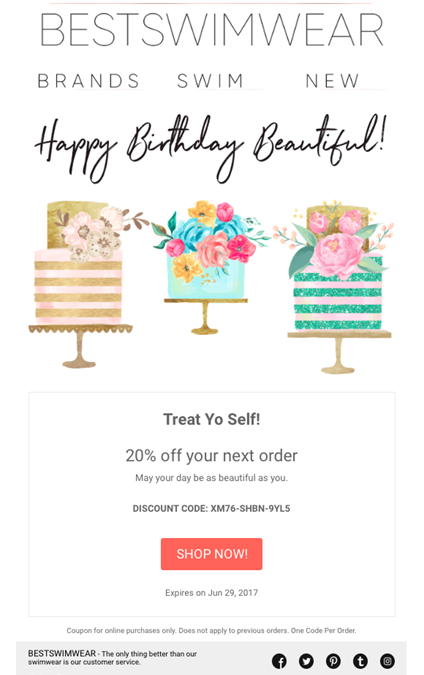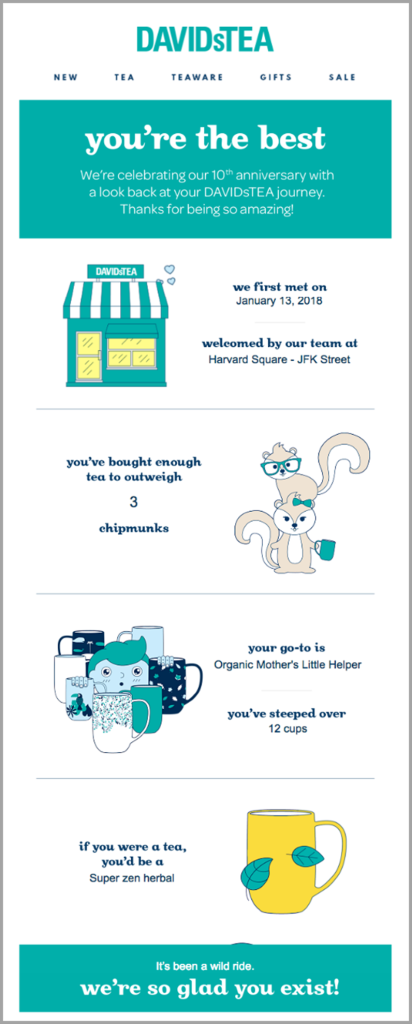As inboxes become increasingly crowded, marketers must become increasingly sophisticated in using data to cut through the noise and tailor their messages to the unique preferences and behaviors of individual recipients.
Personalized emails are shown to achieve an impressive open rate of 29% and an outstanding click-through rate of 41%.
However, when an email lacks personalization, 52% of customers are willing to seek alternative shopping destinations.
What is Email Personalization?
Email personalization is the practice of customizing email content and messaging to cater to the individual preferences, behaviors, and characteristics of recipients. Rather than sending generic, one-size-fits-all emails, personalized emails are tailored to the specific interests, demographics, past interactions, and purchase history of each recipient.
Benefits of Email Personalization
Email personalization enables your brand to deliver personalized content to your audience, fostering stronger connections and ultimately better marketing outcomes. Here are three main benefits email personalization brings to your marketing:
Increased Engagement
Personalized emails resonate more with recipients as they feel tailored to their individual preferences and needs. A significant 72% of consumers exclusively engage with personalized messaging.
This leads to higher open rates, click-through rates, and overall engagement compared to generic, one-size-fits-all emails. According to Mailmodo, 57% of marketers attribute improved visitor engagement to the implementation of email personalization.
By addressing recipients by their names, referencing past interactions, or offering relevant content and recommendations, personalized emails capture attention and encourage interaction.
Improved Conversion Rates
Personalization not only boosts engagement but also drives conversions. By delivering targeted offers, product recommendations, or incentives based on the recipient’s behavior or preferences, personalized emails are more likely to prompt recipients to take the desired action, whether it’s making a purchase, signing up for a webinar, or downloading a resource.
This results in higher conversion rates and a greater return on investment for your email campaigns. According to Campaign Monitor, marketers report a remarkable 760% increase in email revenue from adopting personalized and segmented campaigns.
Enhanced Customer Experience
Personalized emails make recipients feel valued and understood by the brand, leading to a more positive overall experience. Research shows that 55% of consumers believe receiving targeted promotions and discounts would enhance their email experience.
By delivering content that is relevant, timely, and tailored to the recipient’s needs, preferences, and stage of the customer journey, personalized emails create a sense of connection and build trust with the audience. This, in turn, strengthens customer relationships, fosters loyalty, and encourages repeat purchases.
Better Brand Perception
Personalization demonstrates that your brand understands and cares about its customers on an individual level. By delivering personalized experiences across email campaigns, you position your brand as customer-centric, attentive, and forward-thinking.
This positive perception not only enhances brand loyalty but also attracts new customers who are drawn to personalized and tailored experiences, ultimately strengthening your brand’s reputation and competitive advantage in the marketplace.
Types of Data to Enhance Email Personalization
Personalizing emails effectively relies on collecting and utilizing various types of data to create tailored messages for your subscribers. Here are some common data types used to enhance email personalization.
- Demographic Information: This includes age, gender, location, occupation, etc. It helps in crafting messages that resonate with specific demographics.
- Past Purchase Behavior: Knowledge of past purchases allows for targeted product recommendations or promotions.
- Website Behavior: Tracking what recipients do on your website can inform personalized content suggestions or reminders for abandoned carts.
- Email Engagement History: Analyzing how recipients have interacted with previous emails (opens, clicks, conversions) helps in refining future email content and timing.
- Preferences and Interests: Data on preferences, interests, and hobbies enable the customization of content to match the recipient’s interests.
- Transactional Data: Details of past transactions, such as purchase history or subscription renewals, can guide personalized offers or reminders.
- Location-Based Data: Utilizing geographical information can lead to personalized content related to local events, weather, or store locations.
- Social Media Activity: Insights from social media platforms can help in understanding recipients’ interests and behavior outside of email interactions.
- Survey Responses: Responses to surveys or feedback forms provide direct insights into preferences and satisfaction levels.
- Personalized Variables: This includes dynamically inserting the recipient’s name, company, or other personalized details into the email content.
By leveraging these types of data, you can create highly personalized and targeted email campaigns that are more relevant and engaging to recipients, leading to better results and increased customer satisfaction.
Examples of Personalized Emails We Love
1. BestSwimwear
This birthday email from BestSwimwear uses festive imagery and a stylized font. Opening up with, “Happy Birthday Beautiful!” is a great way to make the recipient feel special. The copy is simple and the use of the colored button for the call to action immediately draws your eye.

2. David’s Tea
This customer anniversary email from David’s Tea does a great job of simply appreciating the customer, highlighting milestones along the way, and invoking a sense of warmth and appreciation.

3. Shwood Eyewear
This abandoned cart email from Schwood Eyewear is simple and reminds the consumer of what they left behind in their cart with an image of the product and a 15% discount to further entice a purchase.






